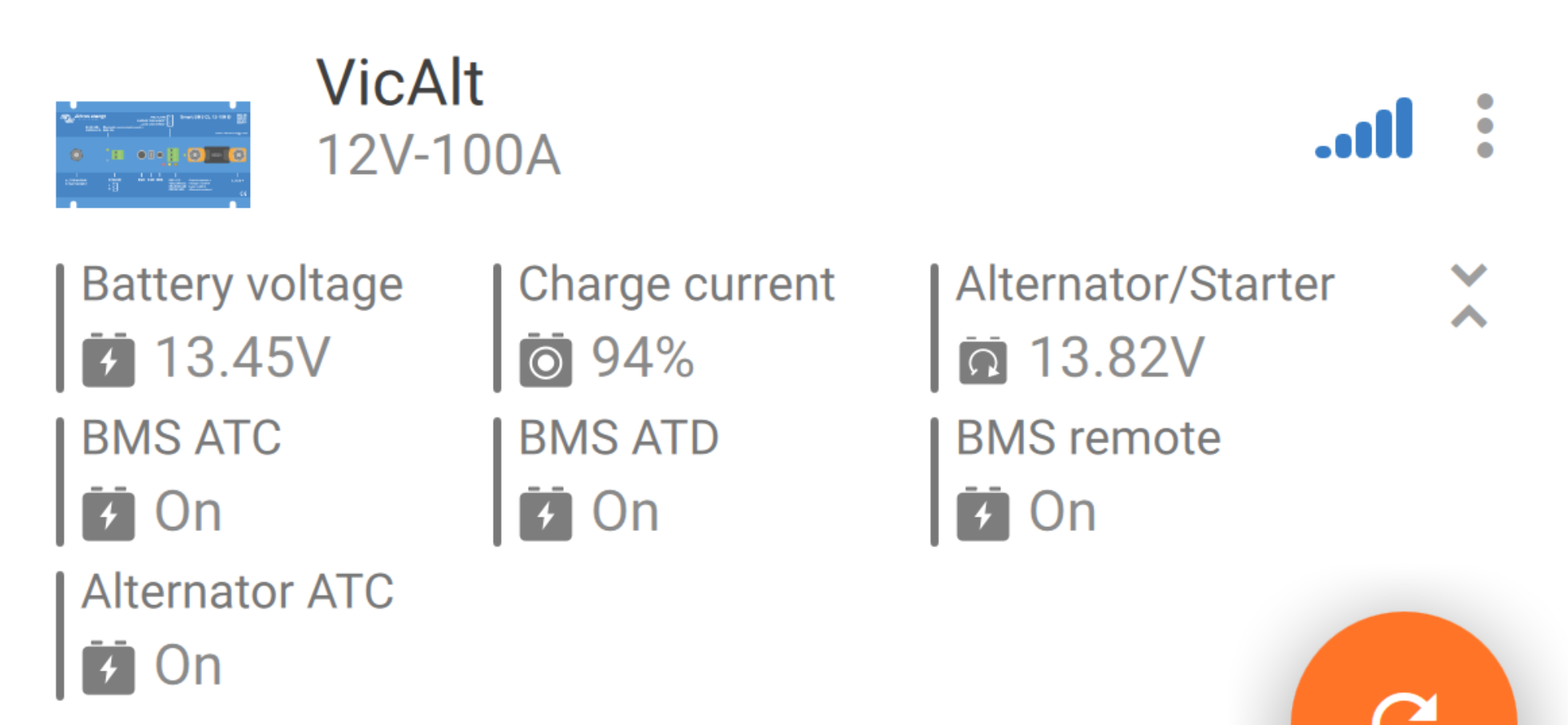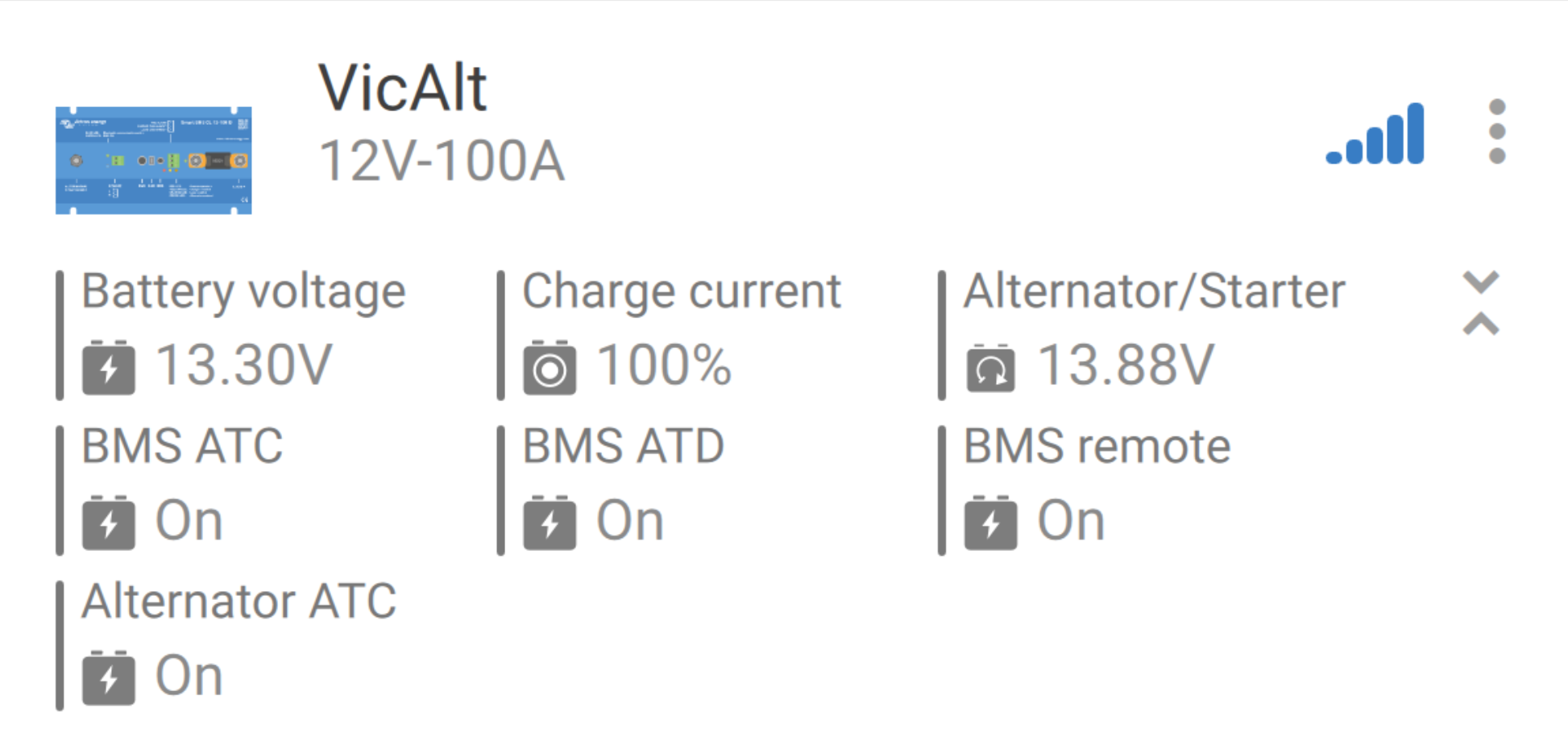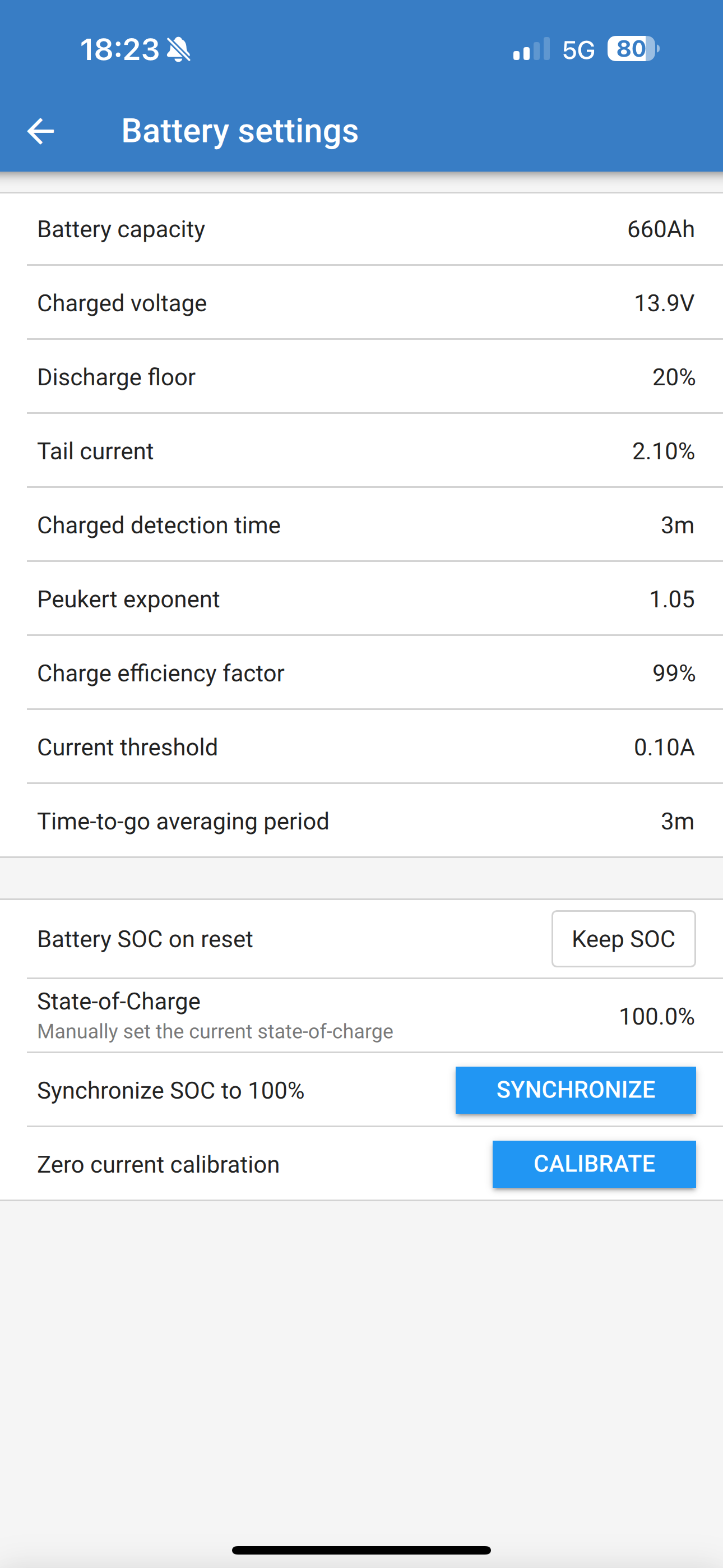Desperately needing help!
I have 2 Victron 330ah batteries charging via Smart BMS 12/100 with 80 amp fuse.
While driving or idle, I never get more than 40 amp charging (in the app, it says around 50% of alternator power) From my Promaster 2020 with 220 amp alternator. Never went higher,
Why don’t I see around 70 amp of charging?
I have seen a few posts with similar issues, but never a clear answer.
Thx, I really hope someone can point me in the right direction.





